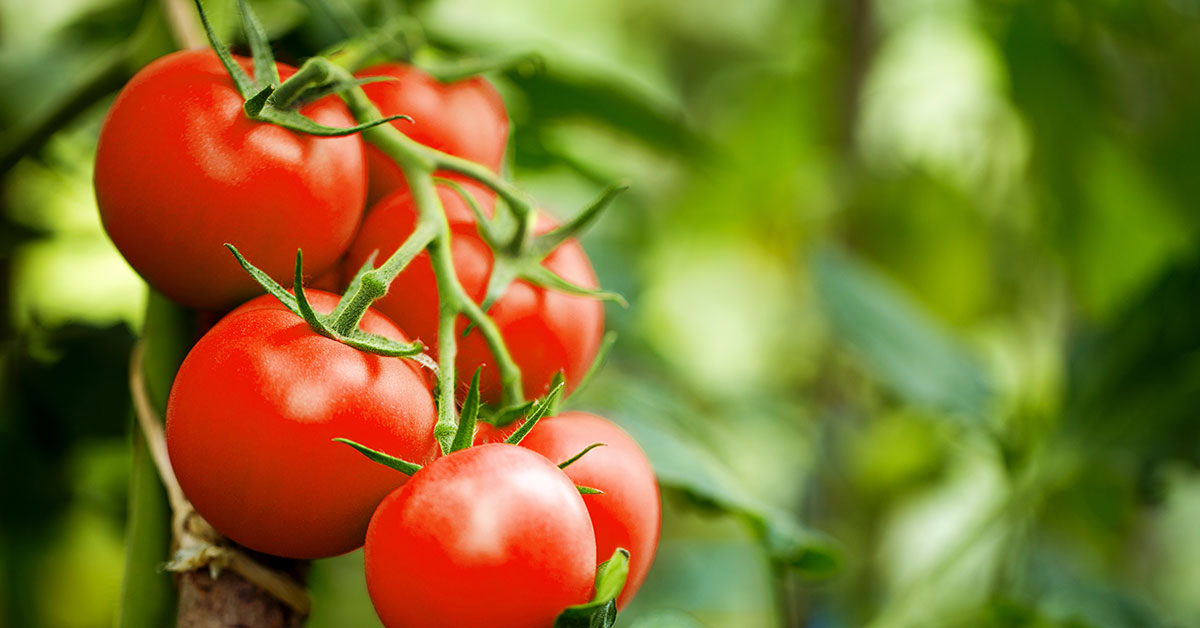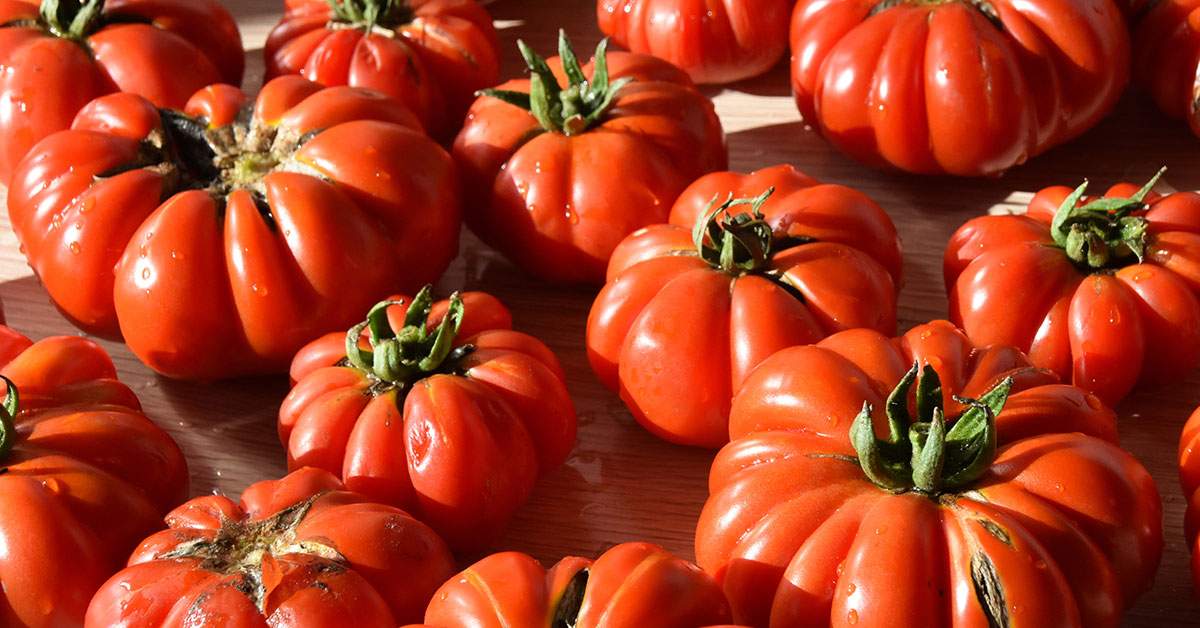The Fourth of July is a day of celebration, a time to gather with friends and family, and a time to enjoy all things red, white, and blue. And what better way to celebrate this patriotic day than with a delicious, juicy tomato?
The Fourth of July tomato is a popular variety of tomato that is perfect for summer celebrations. In this blog post, we will explore the history of the Fourth of July tomato, its characteristics, and some delicious recipes that you can make with this tasty fruit.
What is a Fourth of July tomato?
A Fourth of July tomato is a type of tomato that is perfect for the summer season and particularly for Independence Day celebrations. This tomato variety is known for its vibrant red color and sweet flavor, making it a popular choice for salads, sandwiches, and other summer dishes.
The Fourth of July tomato gets its name from its ability to ripen in time for the Fourth of July holiday, which falls in the middle of the summer season. This tomato variety is an indeterminate type, which means that it continues to produce fruit throughout the growing season. As a result, gardeners can expect a steady supply of fresh, delicious tomatoes from these plants all summer long.
One of the unique features of the Fourth of July tomato is its size. These tomatoes are typically smaller than other varieties, with a diameter of about 2-3 inches. This makes them perfect for snacking or for use in recipes where smaller tomato pieces are desired.
Overall, the Fourth of July tomato is a great choice for any summer garden or celebration. Its vibrant color, sweet flavor, and versatile size make it a popular choice for gardeners and foodies alike. So, if you’re planning a Fourth of July celebration or simply looking for a delicious summer tomato, be sure to give this variety a try!
How to start Fourth of July tomatoes from seed
Starting tomatoes from seed is a cost-effective and rewarding way to grow your own tomato plants. To begin, choose the tomato varieties that suit your preferences and growing conditions.
Fill seed trays or pots with a lightweight and well-draining seed starting mix, plant the seeds at the recommended depth, and provide adequate moisture and warmth for germination.
Once the seedlings have developed their second set of true leaves, they can be transplanted into larger containers or individual pots. Gradually acclimate the seedlings to outdoor conditions before transplanting them into the garden.
By following these basic steps, you can successfully start tomatoes from seed and enjoy a thriving crop of homegrown tomatoes.
Additional Resource: Our comprehensive guide to starting tomatoes from seed
Growing & care
Transplanting and caring for tomatoes outdoors involves a few essential steps. First, choose a sunny location with well-drained soil. Prior to transplanting, harden off the seedlings by gradually exposing them to outdoor conditions.
Dig a hole slightly larger than the root ball of each seedling and plant them, burying the stem up to the first set of leaves. Water the seedlings thoroughly after transplanting. Provide consistent watering, aiming for 1-2 inches of water per week.
Stake or cage the plants for support and prune indeterminate varieties by removing suckers. Monitor for pests and diseases, taking prompt action if necessary. By following these steps, you’ll set your tomato plants up for healthy growth and a fruitful harvest.
Additional Resource: How to transplant and care for tomatoes outdoors
Common tomato pests and diseases
Tomatoes are susceptible to various pests and diseases that can affect their health and productivity. Some common tomato pests include aphids, tomato hornworms, whiteflies, and cutworms. These pests can cause damage to leaves, stems, and fruit, leading to reduced plant vigor and yield.
Additionally, tomato plants can be affected by diseases such as early blight, late blight, fusarium wilt, and verticillium wilt. These diseases can cause leaf discoloration, wilting, and fruit rot. Proper identification and timely intervention are crucial to effectively manage these pests and diseases and ensure the successful growth of tomato plants.
Additional Resource: Comprehensive list of tomato diseases and pests and how to fix them
Common problems
Fourth of July tomatoes are bred to ripen quickly and produce fruit early in the growing season. However, like any other tomato variety, they can be susceptible to certain problems that can affect their growth and production. Here are some common problems that you may encounter when growing Fourth of July tomatoes:
- Blossom End Rot: This is a common problem with many tomato varieties, and Fourth of July tomatoes are no exception. Blossom end rot occurs when there is a lack of calcium in the soil, which leads to a black, sunken spot on the bottom of the fruit. To prevent this, make sure that you maintain a consistent moisture level in the soil and provide enough calcium through fertilization.
- Tomato Hornworms: These pests are a common problem for many tomato growers, and Fourth of July tomatoes are no exception. Tomato hornworms are large, green caterpillars that can quickly defoliate a plant. To prevent and control these pests, you can handpick them off the plant or use an organic insecticide.
- Fusarium Wilt: This is a fungal disease that can cause yellowing and wilting of the plant. Fourth of July tomatoes are bred to be resistant to this disease, but it can still affect them. To prevent this, make sure that you rotate your crops and avoid planting tomatoes in the same spot for several years in a row.
- Early Blight: This is another fungal disease that can affect Fourth of July tomatoes. It causes dark spots on the leaves and can lead to a decrease in fruit production. To prevent this, make sure that you maintain good airflow around the plant and avoid overhead watering.
In conclusion, Fourth of July tomatoes are a great choice for gardeners who want to enjoy early tomatoes. However, like any other tomato variety, they can be susceptible to certain problems. By following good gardening practices and taking proactive measures to prevent and control pests and diseases, you can enjoy a bountiful harvest of Fourth of July tomatoes.
Uses
Fourth of July tomatoes are a popular variety of tomatoes that are typically used for a variety of culinary purposes. These small to medium-sized tomatoes are known for their vibrant red color, juicy texture, and sweet flavor. They are a favorite among home gardeners and chefs alike due to their versatility and delicious taste.
One of the most common uses for Fourth of July tomatoes is in salads. Their sweet and tangy flavor pairs perfectly with a variety of other fresh ingredients, such as cucumbers, red onion, and avocado. They can also be used to add a burst of flavor to pasta dishes, soups, and stews.
Fourth of July tomatoes are also perfect for making homemade salsa. Their juicy texture and sweet flavor make them an ideal ingredient for this popular condiment. Whether you prefer a mild or spicy salsa, Fourth of July tomatoes are sure to add the perfect touch of flavor to your recipe.
Additionally, Fourth of July tomatoes can be used to make delicious homemade sauces. From marinara to barbecue sauce, these versatile tomatoes are a great ingredient to use when making your own sauces from scratch. They can also be used to make ketchup and other condiments.
Overall, Fourth of July tomatoes are a popular variety of tomatoes that are typically used for a variety of culinary purposes. Whether you are making a salad, salsa, or sauce, these delicious tomatoes are sure to add flavor and texture to your favorite recipes.













